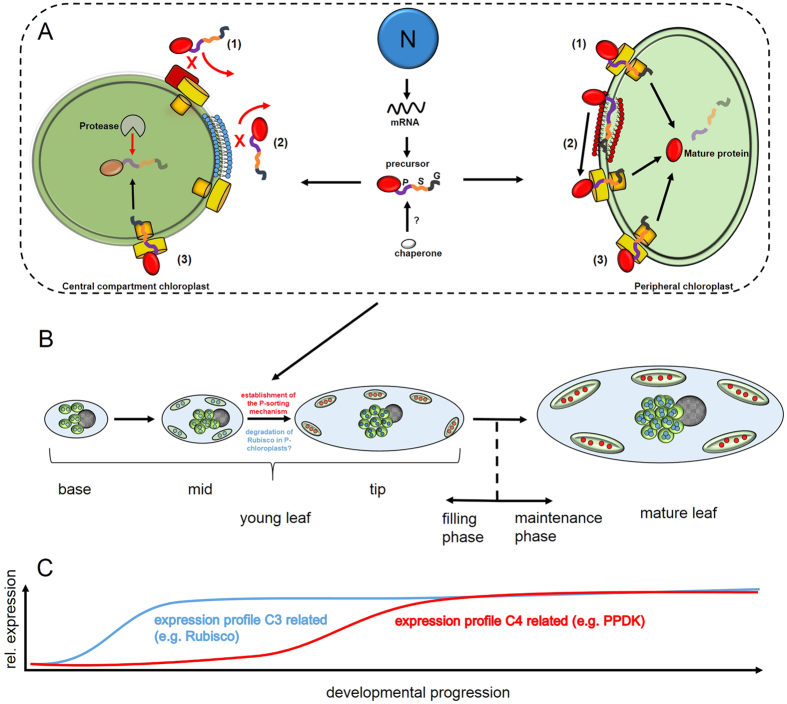Figure 8. Summary and model for differential accumulation of nuclear encoded proteins within the two different chloroplast types of Bienertia sinuspersici.
(A) Potential mechanisms for P-specific accumulation of nuclear encoded, plastid targeted proteins. Nuclear (N) encoded mRNAs for P-chloroplast specific proteins are translated without location preference. The TP precursors carry elements required for general chloroplast import (G) at the N-terminus and P-specific accumulation (P) at the C-terminus separated by spacers (S) and potentially can also interact with chaperones. Different scenarios could explain the TP mediated, P-specific accumulation: P-specific proteins could be blocked from import into the C-chloroplast via so far unknown components of the TOC-TIC complex (1); The P-element could block interaction with the C-chloroplast envelope (2); The P-element could refer degradation of P-specific proteins within the C-chloroplasts (3). (B) Developmental progression of Bienertia chlorenchyma cells. Young cells from the base of young leaves have only a single-chloroplast type that contains Rubisco (blue dots). In the midsections, chloroplasts have started positioning within the peripheral and the central compartment, but all still contain Rubisco along with raising levels of PPDK (modeled after14). Towards maturation, the P-specific sorting mechanism is initiated and Rubisco is removed (either by degradation or by preventing re-import) from the P-chloroplasts. In the tip of young leaves, chloroplast positioning and biochemical specialization is completed. (C) Simplified accumulation profiles of C3 and C4 related proteins during development (compiled from8,15,16,18,43. X-axis represents the same developmental stages (base, mid, tip and mature) as in (B).

